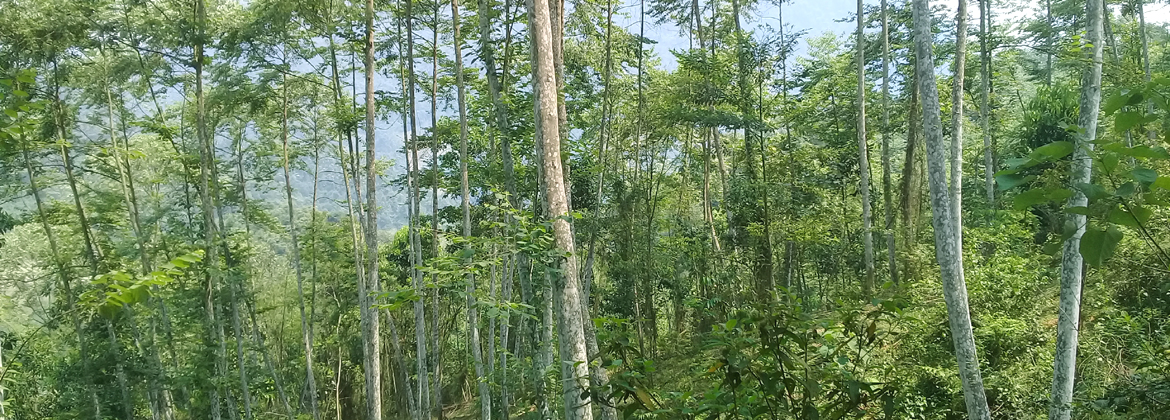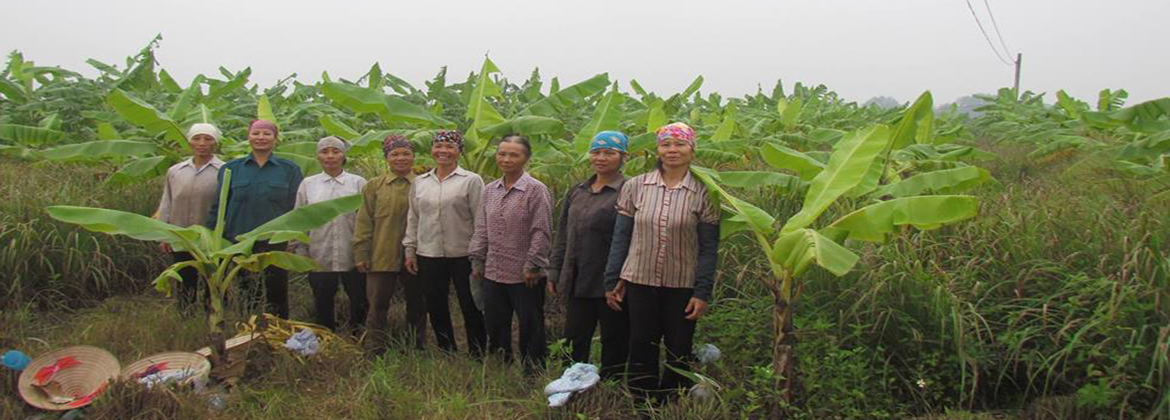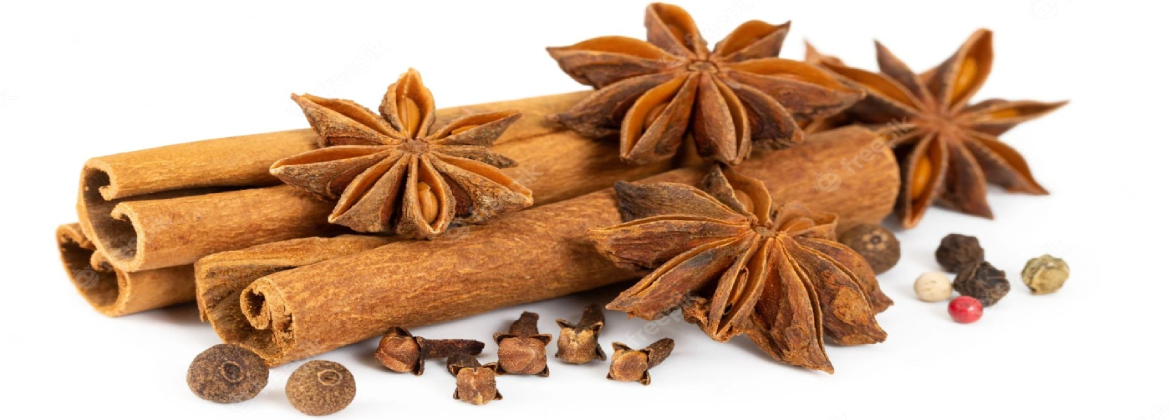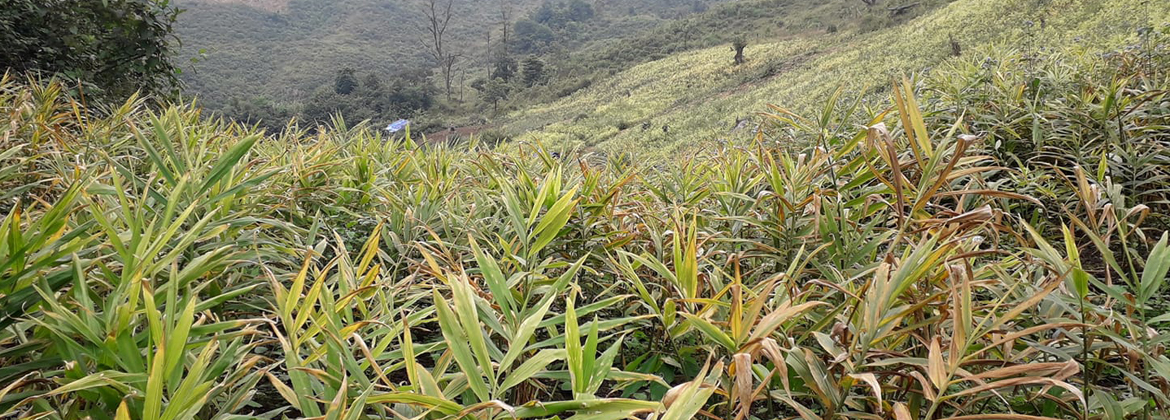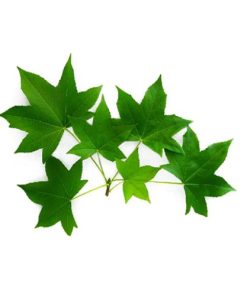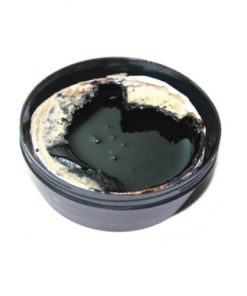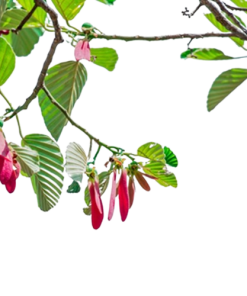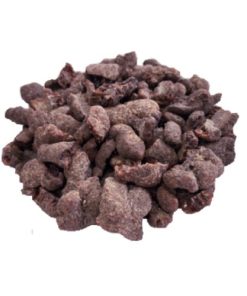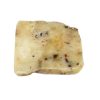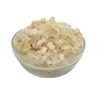BENZOIN SIAM GUM
Specifications:
Botanical Name: Styrax tonkinensis
100% pure & natural
Origin country: Vietnam
Form: Solid gum
Product Classification: Wild Harvested
CAS Number: 9000-72-0
Color: Ivory to orange-brown color
Odor: Vanillin
Package: in carton box 25kg
Shelf Life: Min 3 years
40.000 $
Descriptions:
Benzoin Siam Gum is a balsamic resin from Styrax tonkinensis (Pierre) Craib ex Hartwitch tree, which belongs to the Styracaceae family. It is collected directly from the tree, cleaned and sorted into three grades according to size. The production is entirely manual, from tapping to packaging. It is variously referred to as Siam benzoin gum, Siam benzoin and Benzoin Vietnam or in a generic way as “benzoin gum”. Vietnam & Laos are considered as the major producer of Benzoin tonkinensis, if not the only two at present.
Benzoin tonkinensis is commercialized after it has been cleaned and sorted into three grades, according to its size: grade 1- large tears; grade 2 – medium tears; grade 3 – small tears and powder.
The production is distributed in the following way: 30% Grade 1, 30% Grade 2, and 40% Grade 3. The various grades do not present any significant variation of the chemical composition, but are the result of the cleaning process. They can have only an impact on the colour of the product during the storage at ambient temperature (from beige to brown colour).
The product presents a strong vanilla smell, is insoluble in water and soluble in ethanol.
Ready processed for export, Benzoin tonkinensis appears as pieces which are opaque, grainy, ovoid, flattened (almonds), from few to 30 mm, white-yellow.
After storage at ambient temperature, Benzoin tonkinensis can slightly melt and appears as agglomerated brown-red mass. Its colour turns reddish outside due to air exposure, but stays white- yellow inside.
Besides Benzoin tonkinensis, another type of benzoin is produced, Benzoin sumatranus, obtained from two other Styrax species, Styrax benzoin Dryander and Styrax paralleloneurum Perkins. These two resins differ in their botanical source, geographical origin and chemical composition. The term “benzoin gum” can include one or the other of the two sources or their mixtures.
In Siam benzoin the main constituents are benzoic acid and its esters (such as coniferyl benzoate and benzyl benzoate), while in Sumatra benzoin the major constituents are cinnamic acid and its esters (such as coniferyl cinnamate and cinnamyl cinnamate). Vanillin is present in both types of benzoin resins and gives rise to its familiar vanilla odour (most readily detected in the Siam type).
Chemical characterization:
The product can be described as white-yellow to reddish splits of flattened almond-like grains with a strong vanilla smell. The resin is composed mainly by benzoic acid (15-45 %) and coniferyl benzoate (15-60%), with lesser amounts of vanillin (<5%), benzyl benzoate (<2%), 2-hydroxy-1- phenylethanone and 1-(4-hydroxy-3-methoxyphenyl)-2-propanone.
Functional uses:
Technological function:
Benzoin tonkinensis is intended for use as a food flavour. According to the Codex General Standard for Food Additives (GSFA) norm, dated 1989 and updated in 2009 during the 32nd session of the Codex Alimentarius, and due to its film forming and sequestrant capacities, Benzoin tonkinensis used as a flavour additive can be considered as: flavour enhancer, flavour stabiliser, flavour support and flavour fixer. Those functionalities are likely to improve the flavour stability and thus the organoleptic properties of the preparation.
Food categories and use levels:
According to the literature (Burdock, 1995, 1997; Leung and Foster,1996 and Niederauer , 1994) benzoin gums have been incorporated in various food preparations, including baked goods, frozen dairy products, soft candies, gelatines, puddings, non-alcoholic beverages, alcoholic beverages, chewing gums, confections and frostings.
The food applications for which Benzoin tonkinensis is intended to be used by the sponsor, with their respective claimed doses.
Specification
SPECIFICATIONS
Product name: BENZOIN SIAM GUM
(Styrax Tonkinensis Gum)
1. PRODUCT DISCRIPTION.
Benzoin is the fragrant, resinous exudation secreted by a tree – the Styrax tonkinensis – after an attack by a parasite or an incision in the trunk. In September, the styrax growers manually tap the tree, making multiple incisions on the trunks of mature trees to encourage exudation of the precious gum. After only a few weeks, the white, brittle tears of benzoin flow down the trunk. Oxidation of the tears, caused by contact with the air, will give them a superficial, orangey-brown color. Harvesting the tears is often from December to January.
Styrax tonkinensis comes mainly from the northern highlands Vietnam and Laos between 800 and 1,600meters’ altitude. This large tree was identified by botanist L. Pierre, who named it Anthostyrax before it was renamed Styrax tonkinensis. It is also called Benzoin Siam, Benzoin Vietnam or Benjoin Laos Larmes
The sweet, vanilla-like smell of benzoin is very popular in gourmand perfume compositions. Diluting the Benzoin Siam Gum in a solvent makes it easier to use in formulas.
2. PHYSICAL & CHEMICAL PROPERTIES.
Appearance: Solid gum
Colour: Ivory white colour to Orange yellow color
Odour: Balsamic, sweet, vanilla odour
Flash point: N/A
Melting point: above 60°C
Specific gravity: N/A
Refractive index: N/A
Solubility Soluble in alcohol and Insoluble in water.
3. MAIN APPLICATION:
Benzoin gum is prized for its use in incense and natural cosmetics because of its vanilla-like scent. It can also be used to flavor foods and beverages
Benzoin resin is a common ingredient in incense-making and perfumery because of its vanilla ice-cream aroma and fixative properties. Gum benzoin is a major component of the type of church incense used in Asia where it is burned on charcoal as an incense. In perfumery, benzoin is used as a fixative, slowing the dispersion of essential oils and other fragrance materials into the air. Its penetrating qualities are useful in massage for easing tired muscles. It is used in treating arthritis, bronchitis, chapped skin, coughing, laryngitis, and stress. It has the ability to instantly calm and soothe the soul emotionally.
4. DIRECTION USE:
In perfumery: Blend benzoin gum with alcohol 96% or blend benzoin oil with essential oils to make perfume.
In incense: Burned benzoin for fragrance
5. HANDLING & PACKING.
Storage in a cool, dry & ventilated area away from heat sources & protected from light.
Refer to product MSDS for furthermore information.
Packing in cotton/jute bag.
6. WARNING & NOTE
The data was obtained from current and reliable sources, but is supplied without warranty, expressed or implied, regarding its’ correctness or accuracy. It is the user’s responsibility to determine safe conditions for the use of this product, and to assume liability for loss, injury, damage or expense arising from improper use of this product. The information provided does not constitute a contract to supply to any specification, or for any given application, and buyers should seek to verify their requirements and product use.
MSDS
MATERIAL SAFETY DATA SHEET
(according to Regulation (EU) No. 1907/2006)
Product name: Benjoin Siam Gum
Number: BODE1223
1. IDENTIFICATION OF SUBSTANCE/PREPARATION & COMPANY.
Product name: BENZOIN SIAM GUM
Lot number: BODE1223
Manufacturer/Supplier: Vietnam Essential Oil., JSC
Add: Bai Dai Village, Tien Xuan Commune, Thach That Dist, Ha Noi City, Vietnam
Email: [email protected]
Emergency telephone: +84 903561868
Emergency Contact: Mr. Peter Tron
2. COMPOSITION / INFORMATION ON INGREDIENTS.
The Benzoin Siam Gum obtained from the resin of the Styrax tonkinensis tree original from Vietnam.
Composition: 100% pure & natural
CAS No: 9000-72-0 – FEMA: 2133 – EINECS: 232-556-7
INCI Name: Styrax tonkinensis Gum
3. HAZARDS IDENTIFICATION:
This product is not hazardous. Not dangerous for the environment.
H304 May be fatal if swallowed and enters airways
H315 Causes skin irritation
H317 May cause an allergic skin reaction
H319 Causes serious eye irritation
4. FIRST-AID MEASURES:
Inhalation: Remove from exposure site to fresh air. Keep at rest. Obtain medical attention.
Eye contact: Rinse immediately with plenty of water for at least 15 mins. Contact a doctor if symptoms persist.
Skin contact: Remove contaminated clothes. Wash thoroughly with soap & water, flush with plenty of water. If irritation persists, seek medical advice.
Ingestion: Rinse mouth out with water. Seek medical advice immediately.
Other: When assessing action take Risk & Safety Phrases into account (Section 15)
5. FIRE FIGHTING MEASURES.
Extinguishing media Use CO2, Dry Powder or Foam type Extinguishers, spraying extinguishing media to base of flames. Do not use direct water jet on burning material.
Special measures: Avoid vapour inhalation. Keep away from sources of ignition. Do not smoke. Wear positive pressure self-contained breathing apparatus & protective clothing.
Extinguishing procedures: Closed containers may build up pressure when exposed to heat and should be cooled with water spray.
6. ACCIDENTAL RELEASE MEASURES.
Personal precautions: Avoid inhalation & direct contact with skin & eyes. Use individual protective equipment (safety glasses, waterproof-boots, suitable protective clothing) in case of major spillages.
Environment precautions: Keep away from drains, soils, surface & groundwaters.
Cleaning up methods Remove all potential ignition sources. Contain spilled material. Cover for spillages: with an inert or non-combustible inorganic absorbent material, sweep up and remove to an approved disposal container. Observe state, federal & local disposal regulations.
7. HANDLING & STORAGE.
Precautions in handling: Apply good manufacturing practice & industrial hygiene practices, ensuring proper ventilation. Observe good personal hygiene, and do not eat, drink or smoke whilst handling.
Storage conditions: Store in tightly closed original container, in a cool, dry & ventilated area away from heat sources & protected from light. Keep air contact to a minimum.
Fire protection: Keep away from ignition sources & naked flames. Take precautions to avoid static discharges in working area.
8. EXPOSURE CONTROLS/PERSONAL PROTECTION.
Respiratory protection: Avoid breathing product vapour. Apply local ventilation where possible.
Ventilation: Ensure good ventilation of working area.
Hand protection: Avoid all skin contact. Use chemically resistant gloves if required.
Eye protection: Use safety glasses.
Work/Hygiene practices: Wash hands with soap & water after handling.
9. PHYSICAL & CHEMICAL PROPERTIES.
Appearance: Solid gum
Color: Ivory white to red yellow color
Odor: Vanillin
Melting point: 60°C
Specific gravity: N/A
Solubility in water vegetable oils: Insoluble
Solubility in alcohol: Soluble.
10. STABILITY & REACTIVITY.
Reactivity: It presents no significant reactivity hazards, by itself or in contact with water. Avoid contact with strong acids, alkali or oxidising agents.
Decomposition: Liable to cause smoke & acrid fumes during combustion: carbon monoxide, carbon dioxide & other non-identified organic compounds may be formed.
11. TOXICOLOGICAL INFORMATION.
According to current information, not classed as hazardous to health in normal industrial use.
12. ECOLOGICAL INFORMATION.
Biodegradability: Data not available
Precautions: Prevent surface contamination of soil, ground & surface water.
13. DISPOSAL CONSIDERATIONS.
Avoid disposing to drainage systems and into the environment. Seek expert advice.
14. TRANSPORT REGULATIONS.
Shipping by road (ADR/RID): This product is not considered as dangerous goods
Shipping by air (IATA): This product is not considered as dangerous goods
Shipping by sea (IMDG): This product is not considered as dangerous goods
UN number: not regulated
UN proper shipping name: not regulated
Transportation hazard class: not regulated
Label: Benjoin Siam Gum.
15. REGULATORY INFORMATION. According to Directive 88/379/EEC
Hazards: Harmful
Symbols: n/a
Risk Phrases: Harmful if swallowed
Safety Phrases: If swallowed seek medical advice immediately and show the container / label.
16. OTHER INFORMATION.
Cosmetics Directive – 7th Amendment – Not Restricted
Check maximum usage levels for skin care products.
PACKAGING:
In carton box 25kg
SHELF LIFE:
Minimum 36 months from manufacturing date.
Q.C. REQUIREMENTS.
In-line with general product specification. Always satisfy suitability for specific application.
The data provided in this material safety data sheet is meant to represent typical data/analysis for this product and is correct to the best of our knowledge. The data was obtained from current and reliable sources, but is supplied without warranty, expressed or implied, regarding its’ correctness or accuracy. It is the user’s responsibility to determine safe conditions for the use of this product, and to assume liability for loss, injury, damage or expense arising from improper use of this product. The information provided does not constitute a contract to supply to any specification, or for any given application, and buyers should seek to verify their requirements and product use.
GC/MS
CERTIFICATE OF ANALYSIS
No: 12/2023/BODE
Product name |
BENZOIN SIAM GUM |
INCI name |
Starax Tonkinensis Gum |
Origin |
Vietnam |
Batch No. |
BODE1223 |
Manufacture date |
12/2023 |
Expiry |
12/2026 |
Cas No. |
9000-72-0 |
Part use |
Resin |
Items |
Specifications |
Standards |
Results |
01 |
Appearance |
Solid gum |
Complied |
02 |
Colour |
Ivory white colour to Orange yellow color |
Complied |
03 |
Odour |
Characteristic odour of balsamic, sweet, vanilla odour |
Complied |
04 |
Solubility |
Soluble in alcohol & Insoluble in water |
Complied |
05 |
Main components |
Benzoic acid, Coniferyl benzoate, Vanillin, Benzyl benzoate |
Complied |
06 |
Conclusion |
Comply all of the standards for Benzoin Siam Gum. |
|
Storage: Keep in cool & dry place away from light & heat.
Caution: For external use only. Avoid contact with eyes. Keep out of reach of children.
Review
ss


